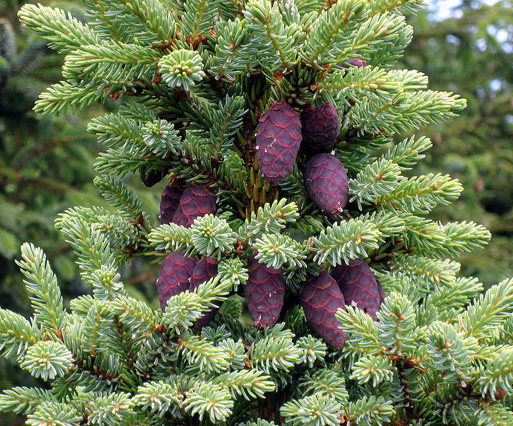INCI name: | Picea mariana |
Part used: | Needle |
Extraction method: | Distillation |
CAS No.: | 8008-80-8 |
Origin: | Canada |
Appearance: | Transparent mobile liquid |
Odour: | Black spruce |
Relative Density(20℃): | 0.89~0.92 |
Refractive index(20℃): | 1.46~1.50 |
Flash point (°C): | 48 |
Optical rotation(20℃): | N/A |
Main Composition(%): | Pinene, pinene, camphene, 3- carene, bornyl acetate |
Picea mariana (black spruce) is a North American species of spruce tree in the pine family. It is widespread across Canada, found in all 10 provinces and all 3 Arctic territories. Its range extends into northern parts of the United States: in Alaska, the Great Lakes region, and the upper Northeast. It is a frequent part of the biome known as taiga or boreal forest. Picea mariana is a slow-growing, small upright evergreen coniferous tree (rarely a shrub), having a straight trunk with little taper, a scruffy habit, and a narrow, pointed crown of short, compact, drooping branches with upturned tips. Through much of its range it averages 5–15m (15–50 ft) tall with a trunk 15–50cm (6–20 in) diameter at maturity, though occasional specimens can reach 30m (98 ft) tall and 60cm (24 in) diameter. It differs from P. glauca in having a dense cover of small hairs on the bark of young branch tips, an often darker reddish-brown bark, shorter needles, smaller and rounder cones, and a preference for wetter lowland areas. Numerous differences in details of its needle and pollen morphology also exist but require careful microscopic examination to detect. From true firs, such as Abies balsamea (balsam fir), it differs in having pendulous cones, persistent woody leaf-bases, and four-angled needles, arranged all round the shoots. |  |